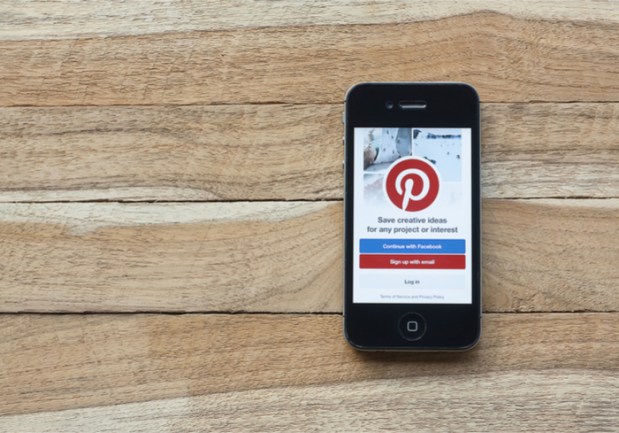Pinterest Powers Up Its Shopping Features

Pinterest, as the web’s best-known social media network/visual search engine, is among favored spots for online shoppers. It is also an incredibly tempting and fertile ground for commerce.
Pinterest reports 250 million actives users each month, half from the U.S. Millennials use Pinterest as often as they use Instagram, and though the average age of a Pinterest use is a little over 40, the average age of an active Pinner is in the 30s. The site hosts over 175 billion pins on over 3 billion boards. Pinners are mostly female — 81 percent are women as are 60 percent of new users.
They are also a rather commerce-primed group of individuals. Around half of all Pinterest users make over $50K a year, about 40 percent make more than $100K a year and about 10 percent early more than $125K per year. And they use Pinterest to guide their shopping, both indirectly — 72 percent report using Pinterest to determine what they purchase offline — and more directly. Eighty-seven percent of pinners note that they have purchased a product because of Pinterest and about 93 percent report using it to plan future purchases. About 2 million of those pinners save shopping pins — ones that enable immediate purchases through the platform — each day. About half of all user report making a purchase after seeing a rich (shoppable) pin.
Pinterest users are also, unsurprisingly, highly mobile, with 80 percent reporting they use the mobile app to access the services.
Given its demographics and their propensities for Pinterest-assisted commerce, it is not that surprising that the firm going into the year’s biggest shopping season is rolling out a collection of new commerce features, with a goal of making the entire experience more “shoppable” according to Pinterest Head of Shopping Product Tim Weingarten.
Those features include Product Pins that are up to date in real time when it comes to pricing or stock information, and an easy, direct link to the seller’s site. Due to this new Product Pin recommendation system, Pinterest will basically use to replace its Buyable pins program.
“Product Pins is a result of years investing in machine vision and visual search,” Weingarten, told Engadget. “The machine vision extracts the essence of the image, the style and taste of it, and uses that to query all other products that are stylistically similar. Product Pins are more personable than Buyable Pins,” he said.
Buyable Pins were simple transactionally, according to Weingarten, and though they allowed consumers to make their purchase directly from Instagram, that wasn’t much of a priority for customers, who were tending to go to the retailer’s page anyway.
The new shoppable products are also designed to make recommendations that match customers with products via creation of a new “Products like this” category. Specifically built for interior design and fashion items, the new tools will offer shoppers a shopping shortcut through stylistically similar items that can be accessed by long holding on an item’s price tag.
“We’re taking all the lessons we learned from visual search and AI, and applying them to recommendations,” said Weingarten. “And we’re using these recommendations on products for the first time.”
The goal, he noted, is simple: when people like things they see on Pinterest they should be able to buy them. The site can give customers recommendations and help tie their tastes and desires to products out there and on trend. But the goal is to make it easier for customers to get what they want, when they see it — and as easily as possible.
The upgrades also come with enhancements to self-services for advertising customers. Pinterest advertisers will now see a set-up tool within Ads Manager that lets them choose a business goal, select an audience, or select the Pins they want to promote in search results or the home feed.
The push for increased digital shopping from its platform is moving — slowly — toward an anticipated 2019 IPO and fending off increased competition from players like Instagram, Facebook and Snapchat which have all started adding features that make it much easier to visually search and buy on their platforms. Forward motion is the best way for Pinterest — which is smaller than the other three — to stay in the game.
Pinterest has already seen some traction with its early efforts in shoppable pins on the platform — the firm reports that clicks on products to retail sites have increased 40 percent since it began testing its latest Product Pins over a year ago. The firm has also been building out its visual search tool, Pinterest Lens, that allows users to snap a photo of something they want to buy, upload it to the app and be taken that product or something like it to purchase.